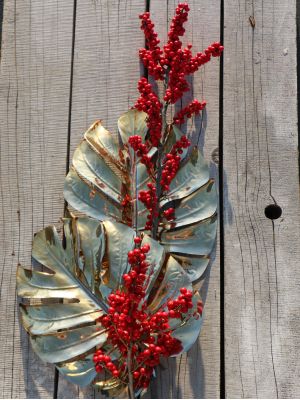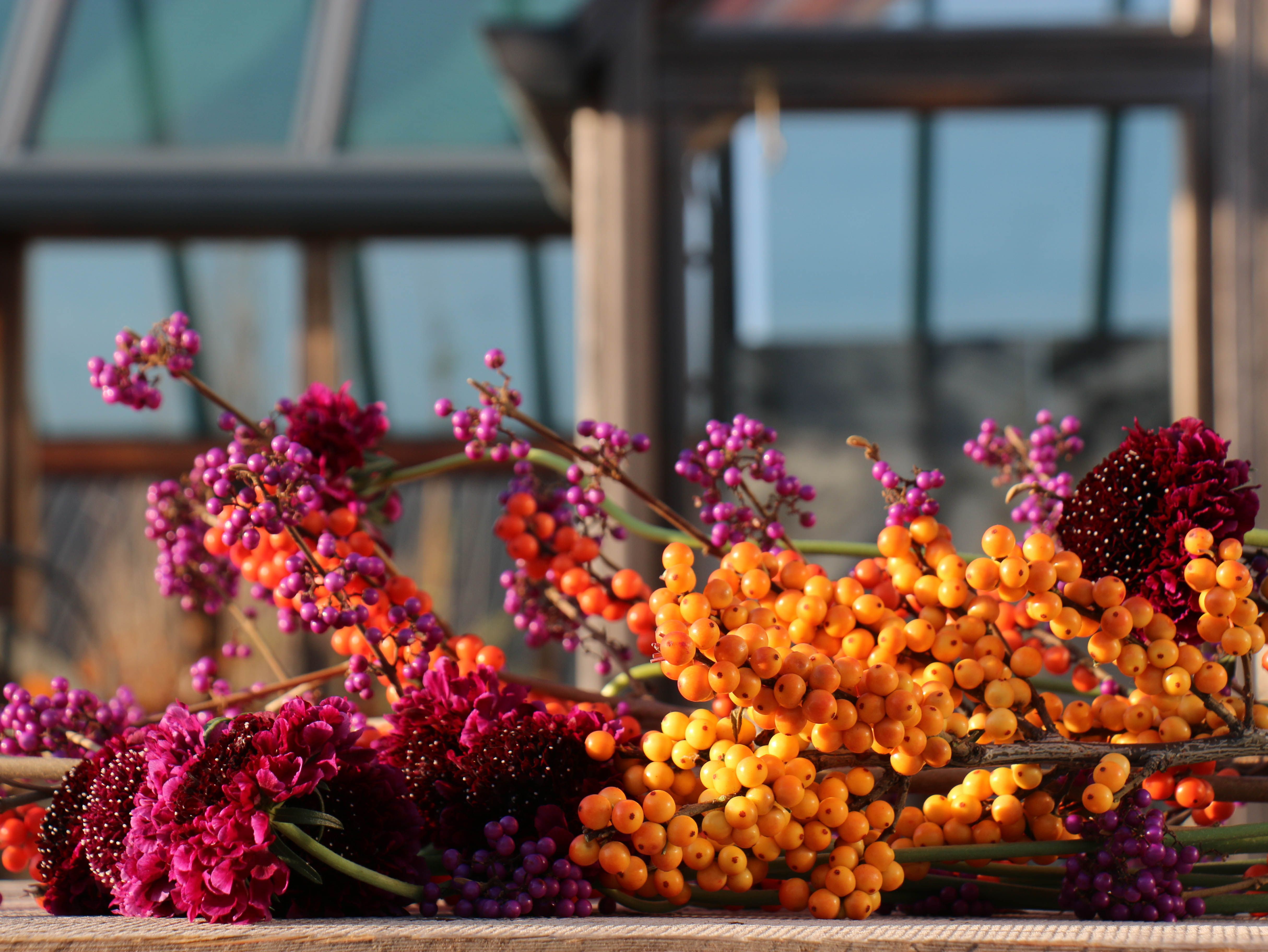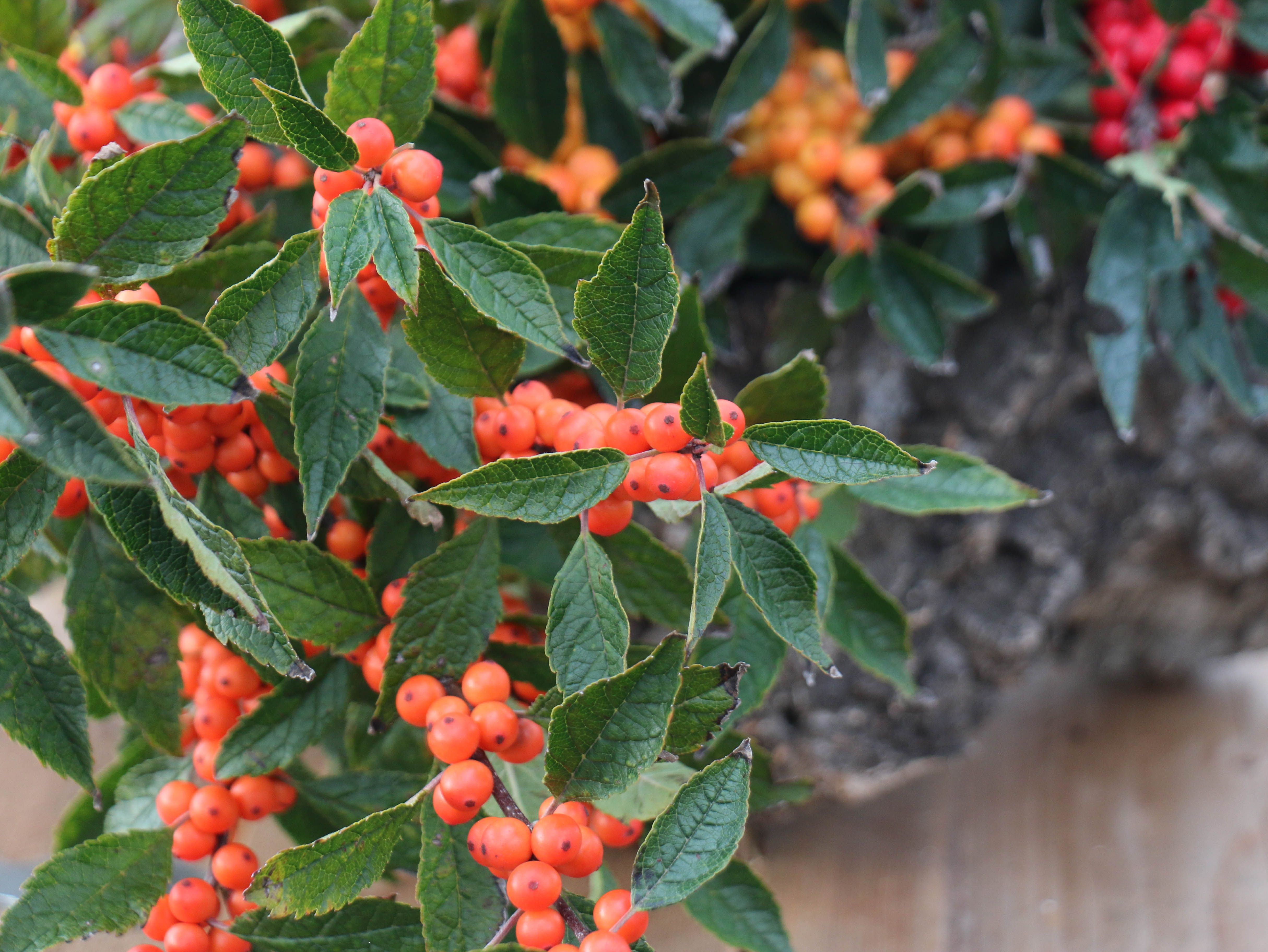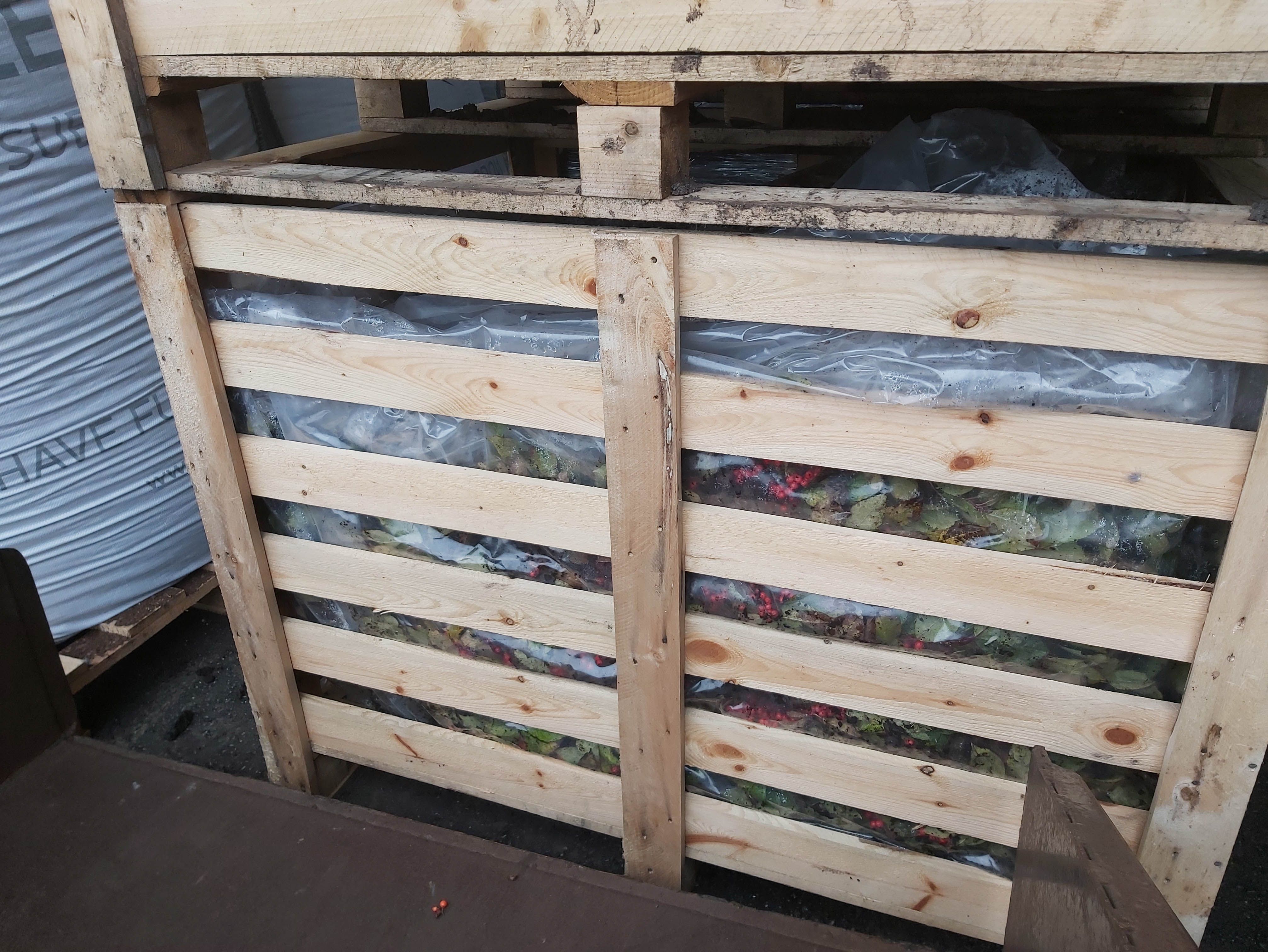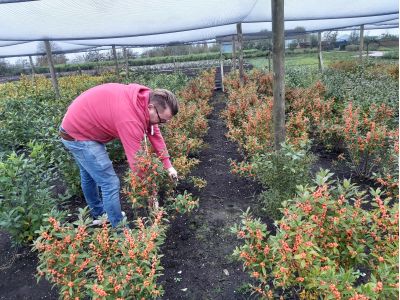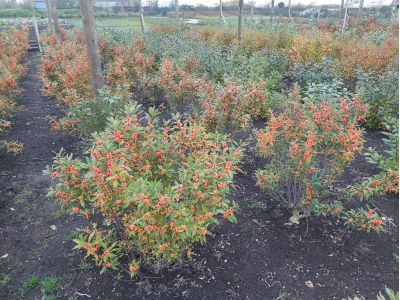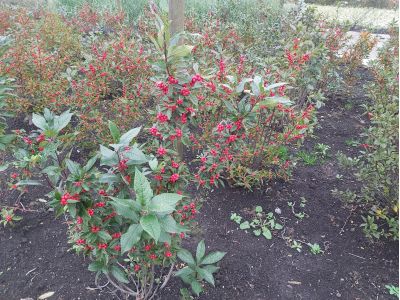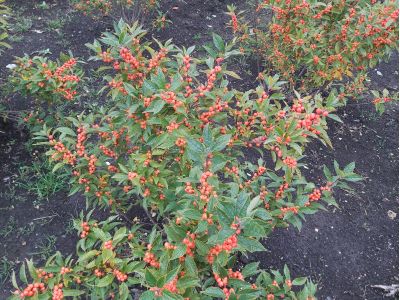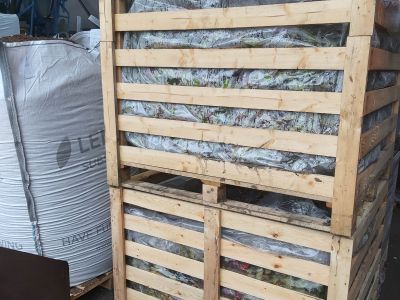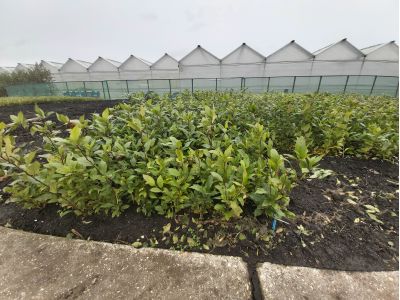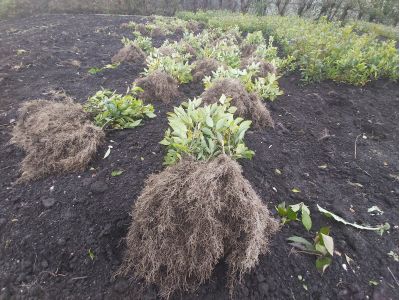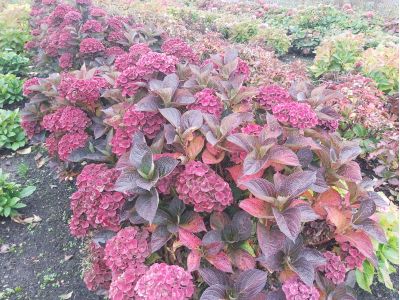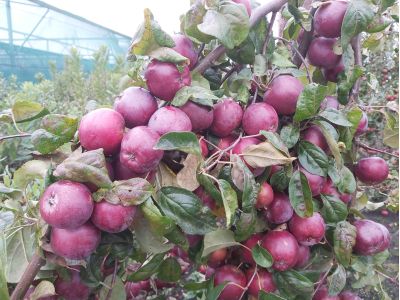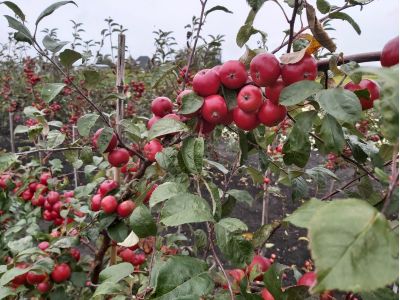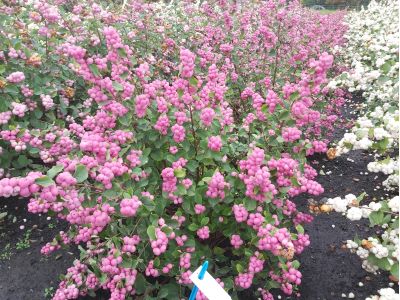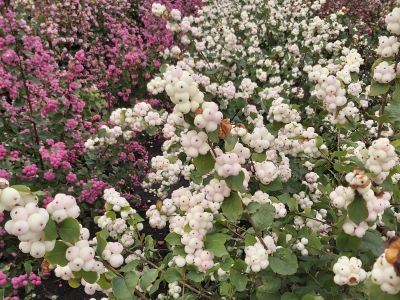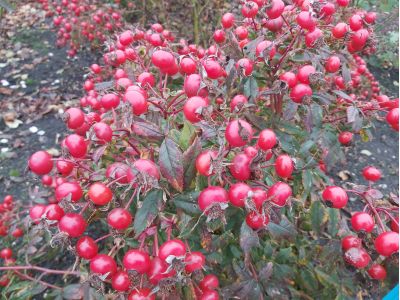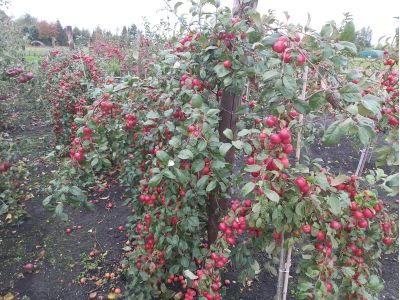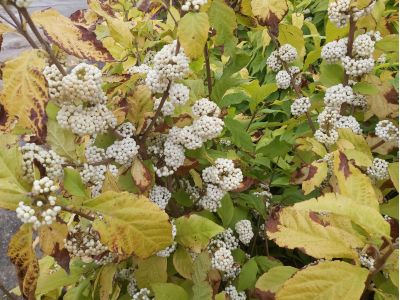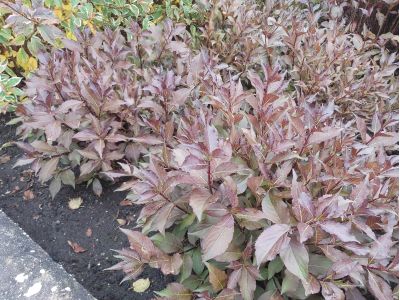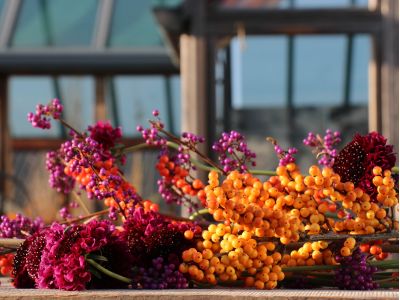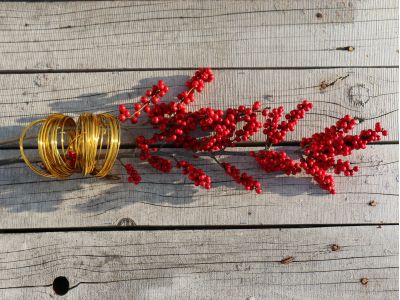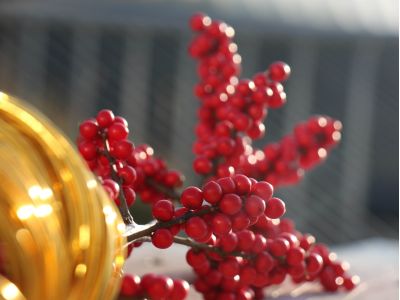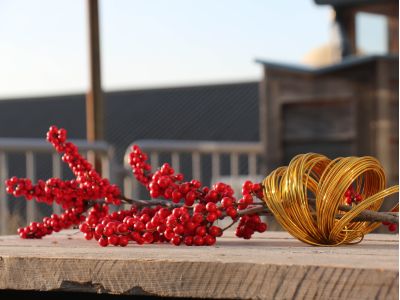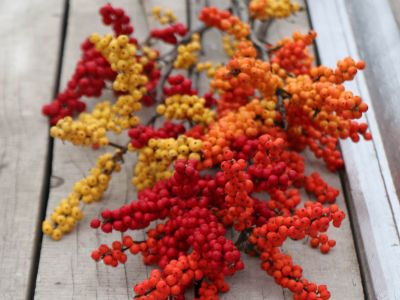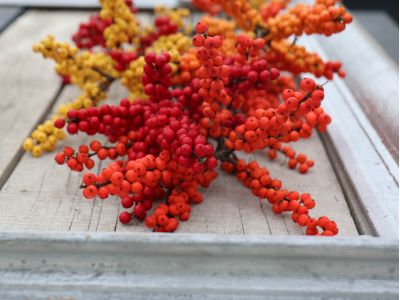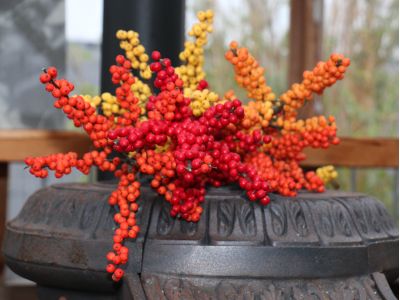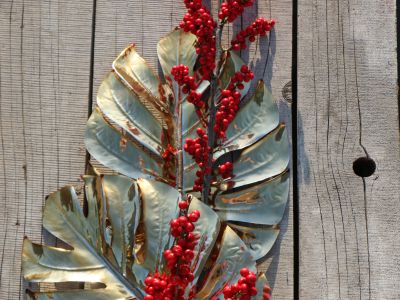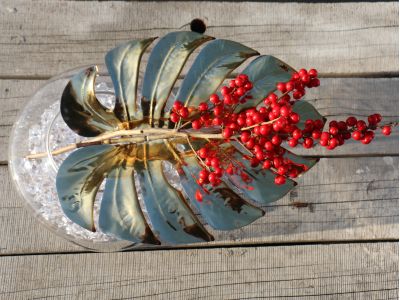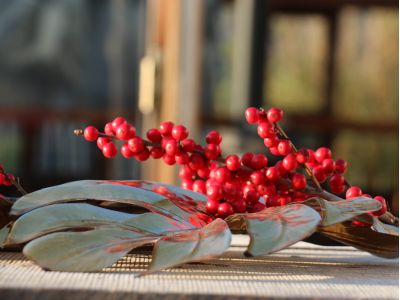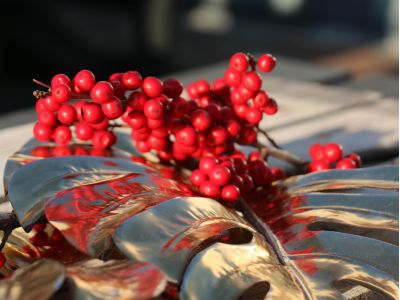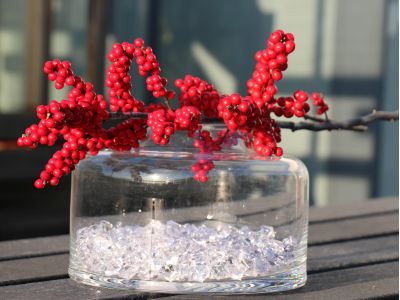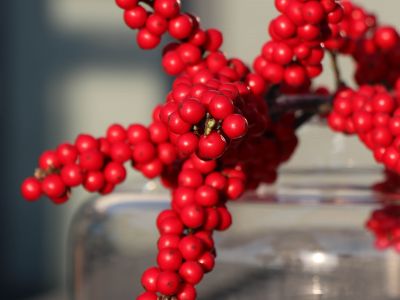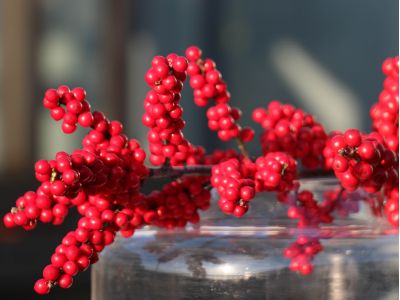Ilex verticillata
In the spotlights
FloraPodium regularly visits growers who talk with great enthusiasm about their special product, the cultivation and where their love for the profession originated. Some growers propagate their products themselves, but most growers leave this complicated process to the breeders. The search for and the long road to the success of these products begins with the breeders. We visited Kolster BV, specialist in cut shrub breeding, cultivation and delivery. Robert-Jan Kolster invited us behind the scenes of the company and told us in particular about the Ilex varieties they breed.
Kolster BV
The Kolster BV company was originally a tree and plant nursery. The love for breeding arose from the standard range of plants and cut shrubs. Initially to perfect existing varieties, but soon afterwards new varieties were bred.
At Kolster they focus on the plants and shrubs that can be harvested for a long time (five to fifteen years). Most delivered products are grown in the Netherlands, but the production is slowly moving abroad, such as Africa and South America. In this way, a nice addition to the range can be grown with products that dot not grow as well in the Netherlands. All crops propagated by Kolster are traded under the brand name "Magical". This brand name ensures international recognition in the sector.
Ilex verticillata
Ilex is one of the crops that Kolster is breeding. “Ilex is a tough plant,” says Robert-Jan with a laugh. "An Ilex plant can produce for 50 years or more." One of the oldest varieties is the Ilex "Oosterwijk", a red variety that many growers still grow, because the crop lasts so long.
It may be that a grower wants to grow a new variety; a variety with a red berry that has a brighter color or less curved branches. Or a variety that can be cut earlier, so that the grower can extend his production season. Or maybe a completely different color. However, most growers will not choose to get rid of their old crop. Ten to twenty years have passed before an Ilex plant produces the desired number of branches. Most growers prefer to grow a new variety in addition to the "old" crop.
Spotlight
This week we don’t want to highlight one cultivar in particular, as we normally do in most spotlight editions of the FloraPodium. Kolster BV has so many new varieties with potential that we would like to show several of them.
Ilex verticillata "Wintergold"; a beautiful full Ilex, with a warm orange color berry. Very suitable in autumn arrangements.
Ilex verticillata "Magical Citronella"; a freshly colored yellow Ilex. An Ilex that in our opinion no longer has to be associated with Christmas at all, but is very suitable in other seasons.
Ilex verticillata "Magical Cresgold"; a beautiful full Ilex branch with a special color in between yellow and orange. Very appealing in bouquets or autumn arrangements.
Ilex verticillata "Magical Daydream"; also a beautiful full branch with a lot of volume in a warm orange color. The "Magical Daydream" is very similar in color to the Wintergold, but the branches of the Daydream are somewhat more uniform.
Ilex verticillata "Magical Amaranth"; this Ilex has a beautiful red berry color. The berry is a brighter red than most red Ilex varieties, making her stand out among the red colored Ilex varieties. In addition, this variety has beautiful straight upright branches.
Ilex verticillata "Magical Winter Jewel"; a beautiful red Ilex that lives up to its name. Red berries the size of jewels. Robert-Jan is very enthusiastic about this potential strain. He would just like to see a little more length in this variety and they’re working hard to make this happen!

Cultivation
Ilex is a crop that requires a good dose of patience. The breeding process takes a long time. After cross-pollination, it takes a few years before the first berry appears. Only then is it possible to determine if there are varieties that have potential. Cuttings are made from these potential varieties, which are planted in rows on a small scale. The species have to be tested extensively before making multiple plants from them. It can take ten years before a new variety can be used commercially.
Labor intensive cultivation
Ilex grows well on acidic soil; peat or sand making a large part of the Netherland unsuitable for its cultivation. Ilex is also a laborious crop, which does not make it a popular choice for growers to grow this crop. The Ilex produces berries every other year, so every branch that is harvested must earn its keep for two years. Some growers now leave their branches standing for an extra year, making the branch even more capricious, because that is completely in line with the current flower trend.
An adult plant focuses on growth the first year. The shrub produces branches that give berries the following year. In the "berry year", the bushes receive a special treatment in January / February. With a spade (some growers do this by machine), the roots that grow outside the root ball are cut loose. As a result, the side branches of the shrubs stay shorter and the flowers grow much closer together, creating beautiful compact branches with a lot of berries. The loosely cut root ball can extract much less water from the ground, which means that a lot of irrigation has to be done. Plenty of water also ensures beautiful full berries.
Male and female plants
Ilex crop consists of male and female plants. It is important that a grower has five to ten percent of male plants scattered around his garden. Without male plants, pollination cannot take place and the female plants do not produce berries. It is important that the male and female plants flower at the same time. The flowering time can differ per type of crop. The bees provide the largest share of pollination. Most Ilex growers therefore ensure that there are a number of beehives next to the crop during the flowering period.
Night frost
Night frost in the spring can cause enormous damage to a crop in the berry year. If the sprouted branches freeze and the flower bud freezes, it will no longer bloom. No pollination can take place and no berries are formed. This night frost can cause a lot of stress for a grower. They can prevent freezing by watering the crop until the ice is off the plant. Growers sometimes have to get out of bed at night to prevent it from being a lost year.
Birds
Birds can also cause enormous damage to the crop. The colder it gets, the less food there is for the birds and chances are increasing that the birds can no longer resist the beautifully colored Ilex berries. Some growers stretch a net over their crop and wait for the natural defoliation of the Ilex before cutting the branches. Other growers choose to harvest the crop with leaves before there is a food shortage for the birds. These growers loosen the leaves; the branches are then piled under plastic and moistened. Due to the heating that arises, the leaves come off. The Ilex branches are then sorted and traded.
Popular in the fall
Ilex cultivation is time consuming and hard work. Most of the work, such as harvesting and sorting, is all done manually. Keeping the garden free of weeds is also very labor-intensive.
Despite the amount of work and time it takes to breed new varieties, Robert-Jan sees many opportunities and potential within Ilex cultivation. Due to the many different colors the crop has to offer, the Christmas image of the product is slowly disappearing and Ilex is becoming an increasingly appreciated and popular autumn item.
FloraPodium, 03 December 2020






